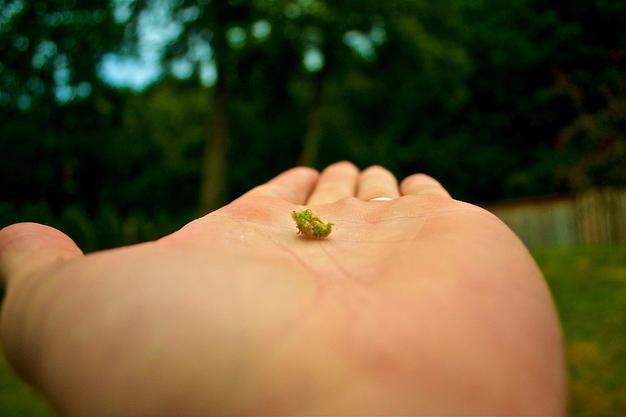Low and Slow – Limiting side effects and interactions of medical cannabis
By: Josh Winningham, Pharm.D
Medical cannabis is a non-toxic, non-lethal, and natural means for symptom relief. Despite the general safety of cannabis as medicine, patients still need to understand potential side effects and interactions of medical cannabis. Studies have shown that slower consumption at lower doses has a marked reduction in adverse events while also improving the therapeutic efficacy of medical cannabis. A “low and slow” dosing protocol, starting with low THC and higher CBD content and utilizing quarterly cannabis detoxes, is the most appropriate protocol for most medical cannabis patients.
Discussing side effects of medical cannabis requires nuance, because what is negatively perceived for one condition may be seen as beneficial for another. The varied phytochemical makeup of a specific variety can also alter the perceived effect. Potential adverse effects of cannabis have been described in several reports.
Common side effects include the following:
- Dry mouth (often referred to as “cotton mouth”)
- Dry and/or red eyes
- Increased appetite (often referred to as the “munchies”)
- Unexpected increase in unfocused energy
- Increased sedation or lethargy
The same appetite, energy, and sleep effects can be beneficial depending on condition symptom relief desired. If a patient is suffering from insomnia, the central nervous system depressive effects of cannabis can induce sleep. If a patient has been diagnosed with cachexia, the appetite stimulation becomes a beneficial effect. These side effects tend to resolve within one to four hours.
Increased dosage amount and/or concentration can produce varied effect. For example, the same medical cannabis product at a low level can have anxiety relieving effects while at a high level can increase or amplify anxiety. Acute adverse side effects attributed to consuming too much cannabis (overdose) include:
- Panic
- Paranoia
- Hallucinations
- Heart palpitations
- Shortness of breath
- Nausea
- Cold sweats
- Shaking or trembling
- Extreme lethargy/sedation resulting in immobilization
These effects are more commonly seen in high THC medical cannabis products compared to low-to-no THC products.
If acute adverse effects are experienced, there are steps that can be taken to alleviate the symptoms. It is important to remain calm and know the feelings will usually pass within 2-12 hours. Recommendations for working through the feelings of being overmedicated include:
- Drink plenty of fluids
- Eat a healthy snack such as whole fruit, which will increase possible low blood sugar
- Take a warm shower
- Go for a walk
- Take a nap, or go to bed
- Refrain from driving or operating heavy machinery while under the influence
- Cannabidiol (CBD) can alleviate some of the physiological effects associated with cannabis toxicity (though it does not reduce the psychotropic feeling of being high)
These effects can be very uncomfortable, but, it is important to note, cannabis alone cannot cause a fatal overdose. Endocannabinoid receptors are not found in abundance in the parts of the brain that support vital functioning such as respiration and circulation. Most illicit drugs that cause fatal overdoses affect these areas. Pharmaceutical medications that cause fatal overdoses affect these areas, or can be combinations of drugs that can include things like acetaminophen, which, taken in excess, can cause liver failure. Cannabis has shown to be both non-lethal and non-toxic.
Longitudinal studies of chronic adverse effects are not prevalent and have resulted in a variety of opposing conclusions. No long-term negative side effects are currently associated with intermittent or low-to-moderate cannabis use. In general, there are concerns about long-term effects on brain development and memory in adolescents who are heavy cannabis users. Adults who are heavy cannabis users seem to have higher chances of developing anomic aphasia, or a problem with word recall. Regular users of inhaled cannabis have a higher risk of chronic bronchitis and impaired respiratory function. Cannabis’ relationship to heart conditions may very well not be causal, but rather correlate to enhancing cardiovascular issues related to an existing condition.
Patients with pre-existing mental health conditions and their health care providers should be mindful of the benefit v. risk analysis of medical cannabis use when determining the best treatment strategies. Statistically, cannabis has a 6-10% addiction rate. This is a lower addiction rate than tobacco, alcohol, and some prescription drugs, but nonetheless should be a consideration when evaluating the appropriateness of therapy for individual patients.
References
1 Russo E. B., Mead A. P., Sulak D. (2015). Current status and future of cannabis research, in Clinical Researcher. 58–63. 10.14524/CR-15-0004
2 Hall W, Solowij N. Adverse effects of cannabis. Lancet 1998;352:1611-6.
3 Ashton CH. Adverse effects of cannabis and cannabinoids. Br J Anaesth 1999;83:637-49.
4 Handbook of Cannabis Roger Pertwee (ed.) Published in print: 2014 Published Online: January 2015 Publisher: Oxford University Press DOI: 10.1093/
5 Karniol IG, Shirakawa I, Kasinski N, Pfeferman A, Carlini EA. Cannabidiol interferes with the effects of delta 9-tetrahydrocannabinol in man. Eur J Pharmacol 1974;28(1):172–7.
6 Lemberger L, Dalton B, Martz R, Rodda B, Forney R. Clinical studies on the interaction of psychopharmacologic agents with marihuana. Ann NY Acad Sci 1976;281: 219–28.
7 The Report of the National Commission on Marihuana and Drug Abuse. Acute Effects of Marihuana. Retrieved September 15, 2017, from http://druglibrary.net/schaffer/Library/studies/nc/nc1e.htm
8 Volkow ND, Baler RD, Compton WM, Weiss SRB. Adverse Health Effects of Marijuana Use. The New England journal of medicine. 2014;370(23):2219-2227. doi:10.1056/NEJMra1402309.
9 Ibid., 47.
10 Anthony, James C.,Warner, Lynn A.,Kessler, Ronald C. Comparative epidemiology of dependence on tobacco, alcohol, controlled substances, and inhalants: Basic findings from the National Comorbidity Survey. Experimental and Clinical Psychopharmacology, Vol 2(3), Aug 1994, 244-268
